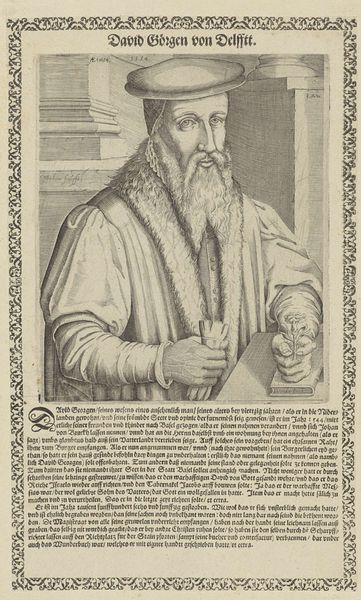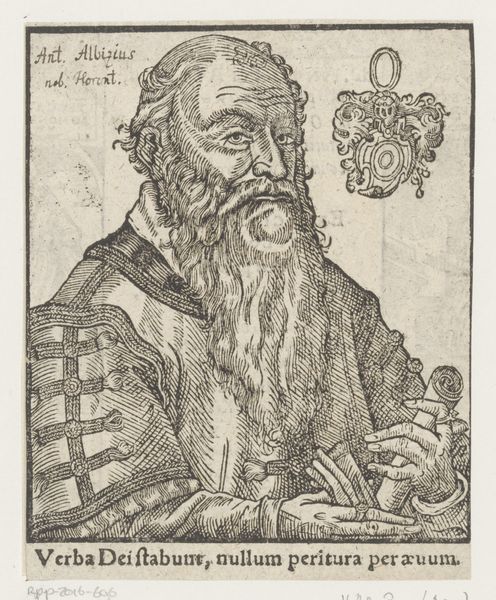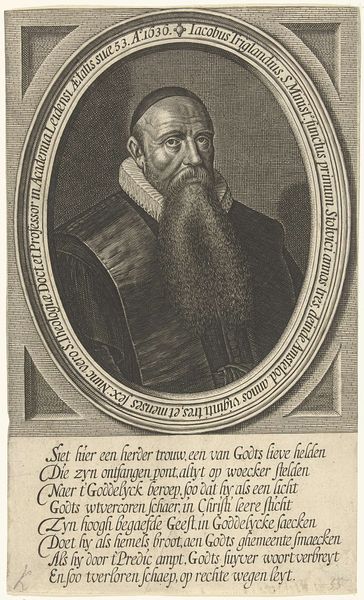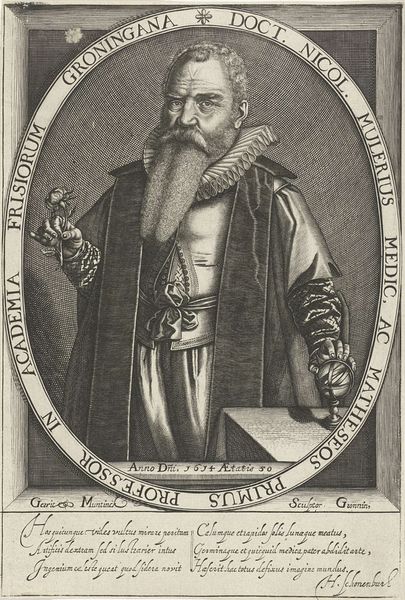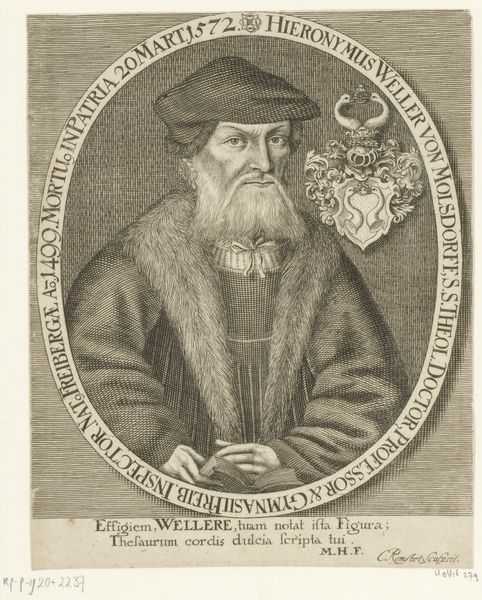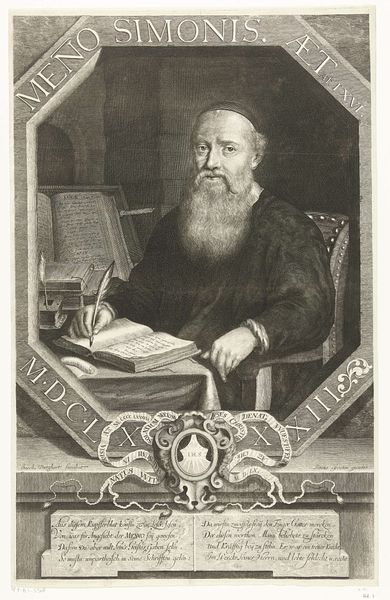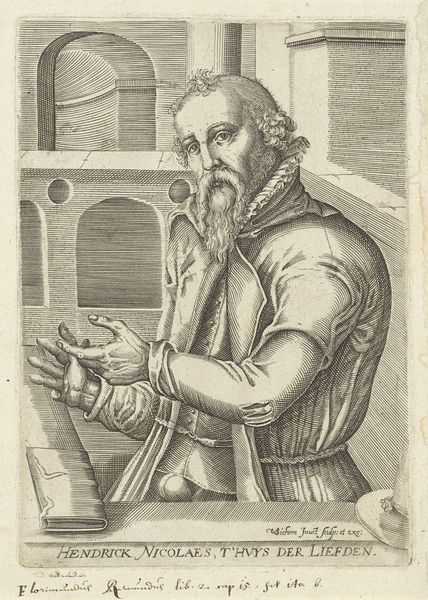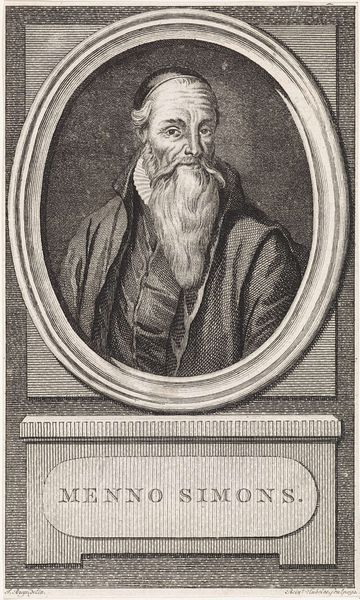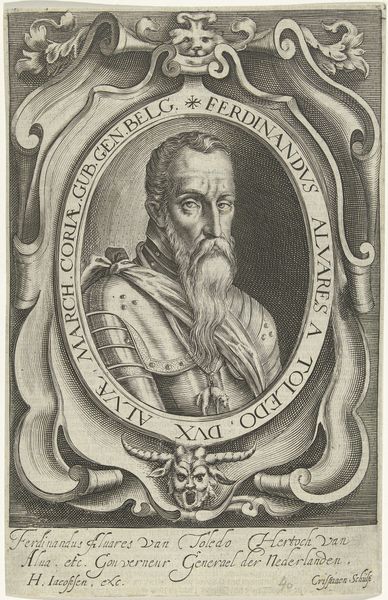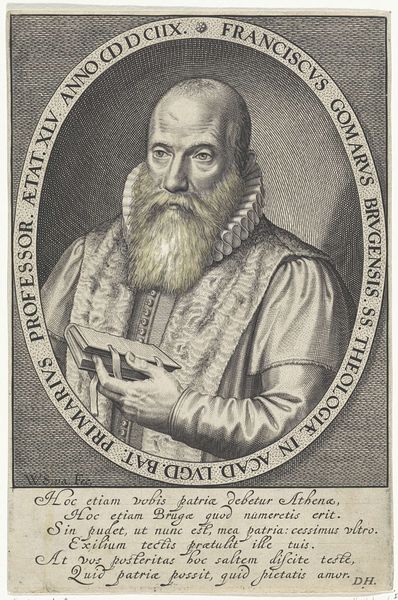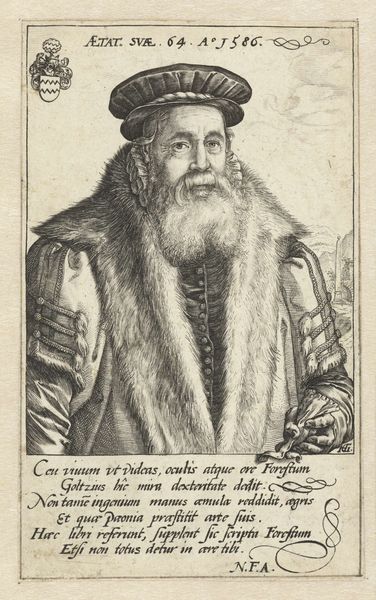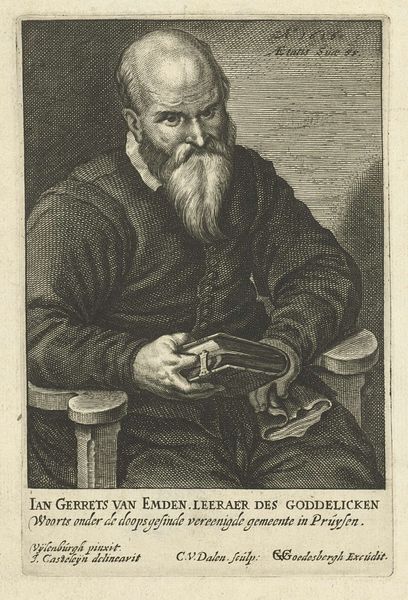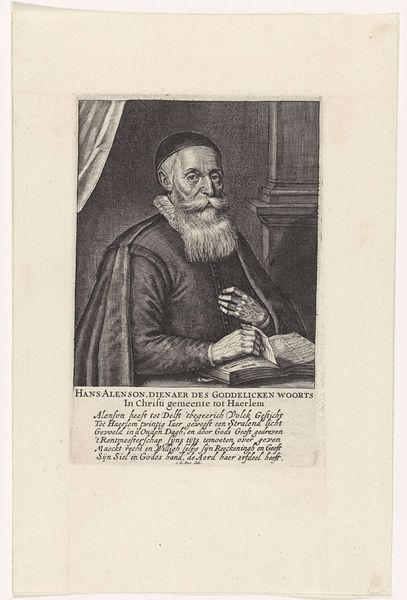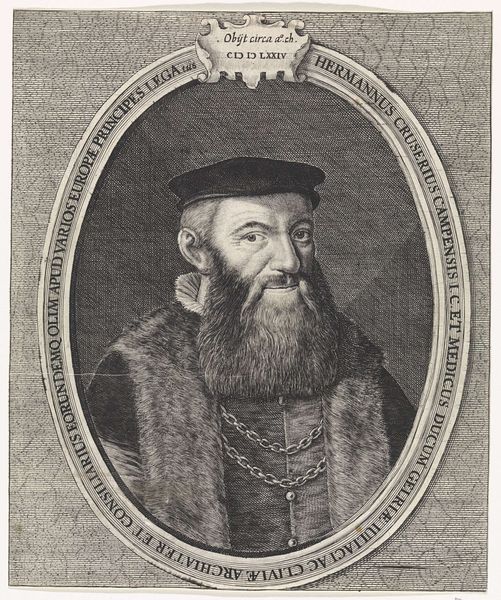
print, engraving
#
portrait
# print
#
11_renaissance
#
history-painting
#
northern-renaissance
#
engraving
Dimensions: height 190 mm, width 119 mm
Copyright: Rijks Museum: Open Domain
Editor: This engraving, "Portret van de meesterzanger Johan Spreng" by Dominicus Custos, dating sometime between 1579 and 1615, really captures your attention with its intense focus on the subject’s face and beard. It gives off an air of importance and scholarly weight, but I wonder what kind of status these portraits served at that time? What do you see in this piece, from a historical perspective? Curator: The interesting aspect about this portrait is its intersection of social status and visual representation. Consider that prints like these, especially portraits of notable figures, played a crucial role in shaping public perception. This engraving, more than just capturing Spreng’s likeness, actively constructs his image as a learned and influential man. Editor: How so? Is it because he’s holding the book? Curator: Precisely. The book signals intellectual prowess, associating him with the world of learning and ideas. The ornate emblem or coat-of-arms on the wall adds another layer, suggesting family prestige and linking him to established power structures. Now think about the context: the Northern Renaissance. How did portraiture function differently in societies influenced by the Reformation, as compared to, say, Italy? Editor: Hmmm... So, less about celebrating personal glory and more about solidifying social standing within a community? Curator: It's more nuanced, but essentially, yes. Portraits could serve a moralizing function. In the Northern Renaissance, there's often this interplay between showcasing individual accomplishment and reinforcing social order. What's been your main take-away after reviewing the art piece? Editor: That I often miss the bigger picture when considering a piece without understanding what historical and cultural environment created it, and what messages they carried to their community. Curator: Absolutely! Context allows us to really *see*.
Comments
No comments
Be the first to comment and join the conversation on the ultimate creative platform.
